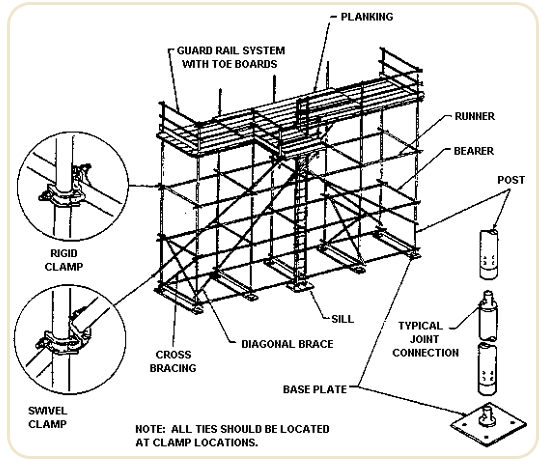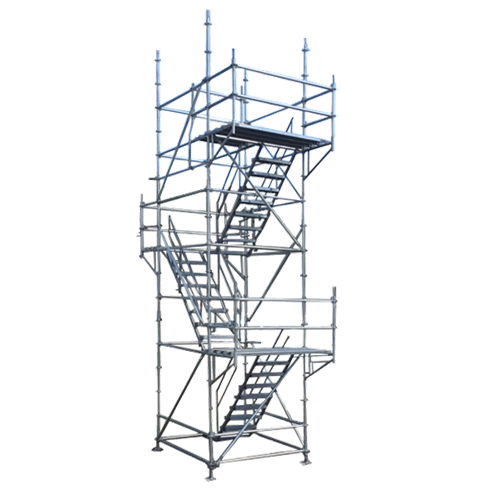Professional Scaffolder Surrey: Your Trusted Partner for Safe Installations
Professional Scaffolder Surrey: Your Trusted Partner for Safe Installations
Blog Article
Exploring the Different Kinds Of Scaffolding Used in Building Jobs
The building industry counts greatly on various kinds of scaffolding to fulfill details job demands, each offering unique advantages and applications. Conventional structure scaffolding gives a tough structure for general tasks, while suspended scaffolding is crucial for job on high-rise structures. Various other alternatives, such as system and rolling scaffolding, provide to performance and flexibility, specifically. Additionally, the cantilever alternative proves invaluable in city settings where room is constrained. Comprehending the subtleties of these scaffolding types is important for optimizing safety and efficiency on building and construction sites, motivating a better examination of their special characteristics and applications.

Conventional Structure Scaffolding
Typical structure scaffolding is just one of one of the most widely utilized methods in the construction sector as a result of its effectiveness and versatility. This system includes straight and upright structures that are constructed to create a secure system for materials and workers. The major components include vertical posts, straight journals, and angled braces, which with each other give a solid framework that can support significant tons.
Among the crucial advantages of typical structure scaffolding is its versatility to various construction jobs, ranging from property buildings to huge commercial structures. The modular layout enables for easy setting up and disassembly, making it reliable for both lasting and short-term projects. In addition, the system can be customized in height and size, suiting different structure layouts and site conditions.
Security is vital in scaffolding applications, and traditional structure systems are furnished with guardrails and toe boards to stop falls and guarantee worker security. Normal examinations and adherence to security regulations are essential in preserving the stability of the scaffold (Scaffolding). In general, traditional structure scaffolding remains an essential option in the building and construction industry, providing a trustworthy platform for labor and improving general job performance

Suspended Scaffolding
Put on hold scaffolding supplies an one-of-a-kind option for building tasks that need accessibility to elevated surface areas, particularly in situations where typical frame scaffolding might be unwise. This sort of scaffolding is commonly put on hold from the roofing or upper degrees of a framework, using a system of systems, pulley-blocks, and ropes to produce a working space that can be adapted to various elevations.
Among the main advantages of put on hold scaffolding is its flexibility. It can be conveniently rearranged or lowered to fit changes in construction needs, making it excellent for tasks such as home window setup, façade job, and maintenance on skyscrapers. In addition, the very little footprint of suspended scaffolding allows for far better use of ground area in urban environments, where area is frequently restricted.
Security is a vital factor to consider in the use of suspended scaffolding. Correct rigging and anchoring systems have to be utilized to make certain security and protect against accidents. Operators needs to additionally be trained in the secure use this equipment. Generally, suspended scaffolding supplies a effective and effective solution for accessing hard-to-reach areas in various building scenarios, boosting both efficiency and safety and security on site.
System Scaffolding
System scaffolding, commonly considered a modern remedy in the scaffolding market, contains pre-engineered components that can be promptly set up and adjusted for different building projects. Scaffolding. This type of scaffolding is characterized by its modular layout, which permits for flexibility and performance on task sites, accommodating architectural demands and various elevations
Typically navigate to this site made from high-strength steel or light weight aluminum, system scaffolding provides improved sturdiness and stability. The parts include upright blog posts, horizontal ledgers, and diagonal dental braces, which interconnect securely, guaranteeing a robust framework. The layout usually integrates standard fittings, streamlining assembly and disassembly procedures, thereby decreasing labor time and prices.

Rolling Scaffolding
Moving scaffolding is a functional choice to typical fixed scaffolding, created for flexibility and convenience of usage on building and construction sites. This sort of scaffolding is composed of a system supported by frames with wheels, enabling workers to easily transfer it as needed. The look at this now wheelchair function dramatically boosts productivity, as it reduces downtime connected with putting together and disassembling repaired scaffolding.
Commonly created from lightweight materials such as aluminum or steel, rolling scaffolding supplies a strong yet portable remedy for tasks needing frequent repositioning - Scaffolding. It is specifically beneficial in tasks such as painting, drywall installment, and electrical job, where accessibility to numerous heights and areas is required
Security is critical in rolling scaffolding design, with functions such as securing wheels to avoid unexpected motion when being used, and guardrails to shield workers from drops. Additionally, several versions are adjustable in elevation, accommodating numerous project needs.
Cantilever Scaffolding

The layout of cantilever scaffolding normally entails making use of arms or brackets anchored to a building or structure, enabling the system to expand external securely. Safety and security is extremely important; hence, these scaffolds have to be crafted to hold up against environmental conditions and numerous tons. Routine inspection and maintenance are important to ensure architectural honesty and worker safety and security.
Cantilever scaffolding is preferred for its adaptability and effective use space, making it a preferred selection in metropolitan atmospheres where space constraints are usual. It assists in simpler accessibility to high elevations, inevitably contributing to the total effectiveness of construction tasks. As with all scaffolding types, proper training and adherence to security requirements are critical for workers using cantilever scaffolding.
Conclusion
Traditional frame scaffolding offers stability, while suspended scaffolding uses convenience for elevated jobs. System scaffolding facilitates fast assembly, and rolling scaffolding enhances movement for varying work atmospheres.
Conventional framework scaffolding offers a strong foundation for general tasks, while suspended scaffolding is important for work on high-rise structures.Moving scaffolding is a flexible alternative to conventional fixed scaffolding, designed for mobility and simplicity of usage on building and construction websites. As with all scaffolding types, proper training and adherence to security standards are essential for employees using cantilever scaffolding.
Conventional framework scaffolding provides security, while suspended scaffolding offers convenience for elevated jobs. System scaffolding assists in scaffolding on wheels quick setting up, and rolling scaffolding improves flexibility for differing work atmospheres.
Report this page